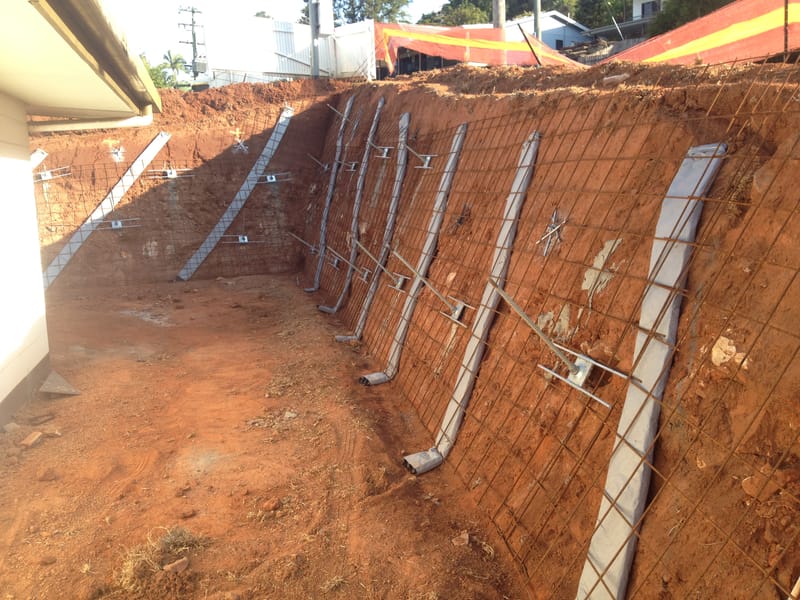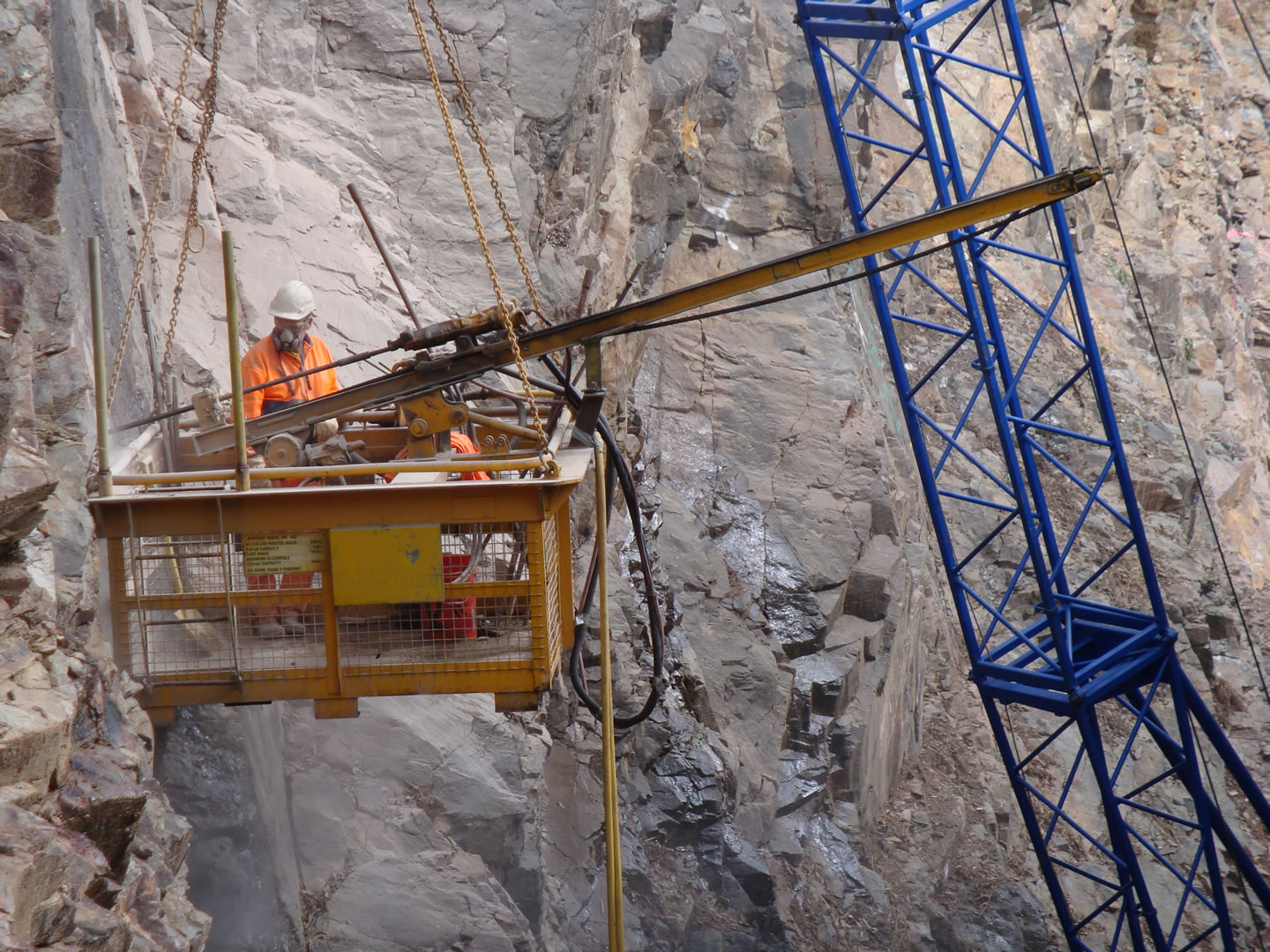How Williams Anchors Provide Security for Large-Scale Facilities Projects
How Williams Anchors Provide Security for Large-Scale Facilities Projects
Blog Article
Cutting-edge Rock Anchors for Boosted Building And Construction Assistance
Innovative rock anchors have significantly become a centerpiece in construction design, particularly as tasks require higher security and performance. With improvements in products and modern technology, modern anchoring options such as grouted and post-tensioned designs offer considerable improvements in load-bearing capability and versatility to varied geological conditions. The combination of advanced modeling methods further enhances performance optimization, yet the complete possibility of these innovations stays to be discovered. As we take into consideration the ramifications of clever sensors and sustainable methods, one must ask: how will these growths redefine the future of building and construction assistance?
Advancement of Rock Anchors
The evolution of rock anchors has considerably changed building techniques over the past century. Rock anchoring methods were basic, depending on straightforward mechanical tools and basic products. As design self-controls advanced, so did the understanding of geological conditions and the demand for trustworthy securing systems - Williams Anchors. The mid-20th century saw the intro of high-strength steel tendons, which supplied improved load-bearing capabilities, enabling for more enthusiastic building jobs in challenging terrains.
In tandem with improvements in materials science, the advancement of grouting techniques enhanced the bond in between the support and surrounding rock, causing raised stability and durability. The combination of technology right into layout and screening processes has actually caused much more exact and efficient installment approaches, further optimizing efficiency. Computer modeling and simulations now allow engineers to forecast anchor habits under various problems, enhancing safety and reliability.
Moreover, the expanding focus on sustainability within building and construction techniques has resulted in technologies in environment-friendly materials and techniques for rock anchoring. In general, the trip of rock supports reflects the building and construction sector's adjustment to both technical developments and the boosting complexity of modern design obstacles.

Kinds Of Modern Rock Anchors
Modern rock supports can be found in a variety of kinds, each created to fulfill specific engineering needs and geological problems. The most usual types consist of grouted supports, which entail putting a steel tendon into a drilled opening and loading the room with grout to develop a strong bond with the bordering rock - Williams Anchors. These supports are usually utilized in applications requiring high tons capacities
An additional widely made use of kind is the mechanical support, which counts on mechanical devices to safeguard the support in position without the demand for grouting. These supports are preferred in situations where instant load-bearing capacity is vital.
Furthermore, there are post-tensioned supports, which are mounted tensioned to supply security to frameworks such as bridges and maintaining wall surfaces. These supports help to neutralize tensile pressures acting upon the structure.
Advantages of Cutting-edge Layouts
Technology in rock support layout brings countless advantages that enhance building and construction performance and architectural honesty. Modern layouts utilize sophisticated products and engineering strategies to dramatically improve load-bearing abilities. These cutting-edge supports are often built from high-strength steel or composite materials, which not only decrease weight yet additionally boost resistance to corrosion, making certain long life and integrity in different ecological conditions.
Moreover, using computer-aided layout (CAD) and limited aspect analysis (FEA) permits for specific modeling and testing of over at this website anchor performance under real-world conditions. This leads to anchors that can be tailored to specific project requirements, optimizing their efficiency and minimizing the requirement for over-engineering, which can be both cost and resource-intensive.

Situation Studies in Building
Real-world applications of ingenious rock support designs show their transformative effect on building tasks. One significant study includes the building of a skyscraper structure in a seismically active region. Designers utilized advanced rock anchoring strategies that utilized high-strength products, guaranteeing the framework's stability against possible earthquakes. The supports were strategically placed to improve tons distribution and reduce negotiation, inevitably bring about an extra resistant structure.
One more significant example can be found in the expansion of a transport passage. Cutting-edge rock supports were utilized to protect the tunnel wall surfaces, enabling for much deeper excavation without endangering security. The application of grouted rock anchors supplied raised tensile toughness, allowing employees to progress the task immediately.
In a third case, a significant dam project incorporated rock anchors to support the embankment. Making use of corrosion-resistant materials in the anchors made sure long-lasting sturdiness, lowering maintenance prices and enhancing safety and security criteria.
These study demonstrate the efficiency of ingenious rock support styles in resolving intricate design difficulties, highlighting their crucial duty in modern-day construction techniques. The effective results highlight the need for continued investment in advanced anchoring innovations to meet advancing building needs.
Future Trends in Rock Anchoring
As building and construction needs progress, the future of rock anchoring is poised for considerable innovations that will certainly boost security and efficiency in numerous applications - Williams Anchors. Emerging modern additional hints technologies, such as wise sensors and real-time surveillance systems, are expected to play an essential role in the growth of more reputable securing remedies. These developments will enable for constant evaluation of support efficiency, making it possible for timely interventions and reducing risks connected with structural stability
Additionally, the integration of lasting products and methods is ending up being progressively important in the building industry. Future rock supports might integrate environment-friendly materials that reduce environmental impact while keeping performance criteria. Innovations in materials scientific research could lead to the development of high-strength, lightweight supports that streamline installment processes and decrease labor expenses.

Verdict
To conclude, innovative rock supports represent a significant improvement in building support, resolving the challenges postured by varied geological problems. The growth of modern-day layouts, including grouted and post-tensioned supports, enhances load-bearing abilities while advertising stability. Integration of sophisticated innovations, such as computer-aided design and clever sensing units, even more enhances efficiency and sustainability. Proceeded research study and implementation of these technologies will certainly shape the future of building and construction techniques, making sure efficiency and ecological responsibility.
Report this page